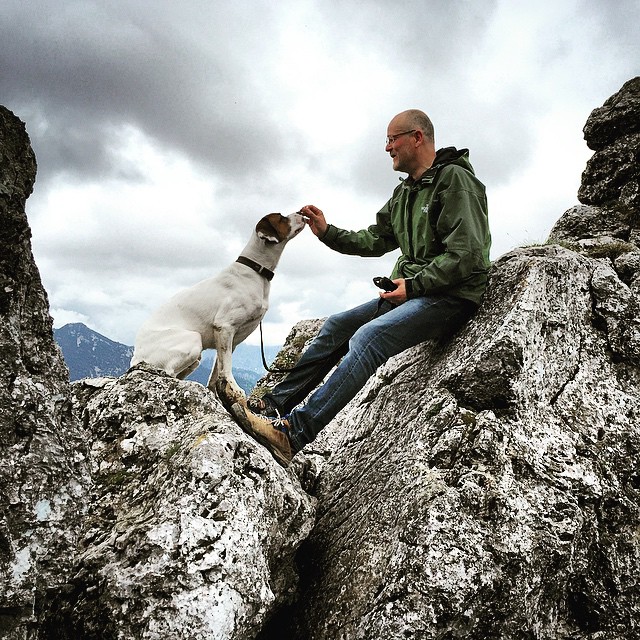Innovation Part 2
admin
- December 2, 2016

Or what you can do to feel like Steve Jobs
If you want to climb a mountain, you have to get up early. I get up at 4:00 am. That way I make it to the parking lot before dawn and can begin my ascent undisturbed in the cool morning breeze. After two hours, I’m at the half-way point, high enough to greet the morning sun. Two more hours and I have reached the summit. I break out my lunch and take in the view. I’m all by myself, and it’s completely quiet up here, apart from the birds who are hoping to score a piece of my sandwich. The sun finally reaches the valleys below. Small clouds are floating by. The 360 degree view is grandiose. I have an elevated feeling, like a king.
On the descent, I have to quit dreaming. I have to concentrate on my steps in order to avoid tripping and starting a rock slide. At some point I come across the first hikers scrambling uphill. They’re surprised to see me. “How is it possible that somebody is already on their way down?” they wonder. Again I’m overcome by that kingly feeling. The sun is really heating up the slopes by this point. Uphill hikers are covered in sweat. They look at me with a mixture of envy and admiration.
As this elevated feeling grabs me again, I have to think of Steve Jobs. He must have felt like a king sometimes, like when he descended from his Olympus to have a vegan lunch in the Apple cafeteria. He too got up at 4am, read thousands of emails before noon, invented the iPhone, explained to his designers, which knick-knacks needed to disappear so that the thing would be worthy of an Apple logo. But it wasn’t just his work ethic that made him a king. He had a vision.
Unlike IBM and other tech pioneers, Jobs didn’t believe that computers were only for specialists and large companies. As early as the seventies, Jobs had set his mind to building computers that could be used by everyone. He wanted to enable all people to improve their lives with computers, to inspire them. This was revolutionary thinking at the time. But it was this vision combined with his understanding of what was required to fulfill it, which differentiated Jobs from his peers. This vision is responsible for making Apple the highest valued company in the world today.
Douglas C. Engelbart was one of the most influential computer developers and inventors in the world. He played a crucial role in the invention of the computer mouse, but hardly anyone knows his name. Why? Engelbart was a genius inventor, but no visionary. What use is a groundbreaking invention if you don’t see its potential? In 1963 the concept of the computer mouse and the graphical user interface had already been developed. Engelbart presented it at the Stanford Research Institute in 1968. The presentation was filmed and is still viewed as the mother of all demos.
The concept of the mouse and the graphical user interface became a sleeping beauty until the year 1979, when it was kissed awake by a twenty-four year old Steve Jobs at Xerox Parc. Xerox engineer Larry Tesler showed Jobs the computer mouse concept, and Jobs couldn’t believe that he was the only one who saw its revolutionary potential. It was clear to him that the mouse was the decisive push he needed to take a big step towards his vision.
Back at Apple, he demanded his engineers to rethink. Jobs wanted a user interface with menus and windows. And he wanted a mouse. But in order to create a breakthrough innovation, the concept needed significant improvements: the mouse couldn’t break after two weeks, its manufacturing couldn’t cost more than $15, it had to work on desk surfaces and on bluejeans. Apple developers went out and bought all the deodorant rollers they could find. It was the beginning of the Apple Mouse.
Steve Jobs presented his Macintosh in 1984. It was the first mass-produced personal computer with a graphical user interface. His presentation, too, was recorded and has been embedded in our collective memory.
So this seems to be the simple (but not easy) recipe for innovation: you stumble across a revolutionary idea, develop a market-ready concept that’s inspired by a unique vision, you accept the risk, and you invest a bunch of work. If you’re successful, you’ll feel like a king.
If I want to feel that way next time I have this choice: I can do like Steve Jobs, or I go climb a mountain.



